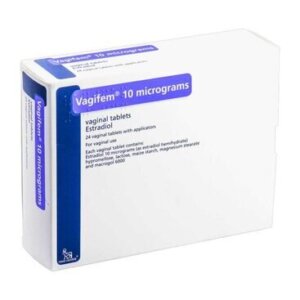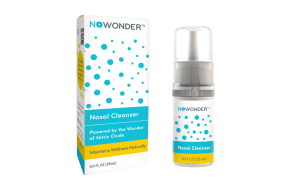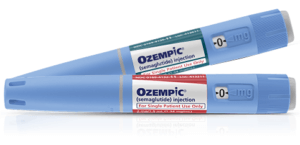 Angiotensin-based medicines sit at the center of modern high blood pressure treatment. The angiotensin-based medications most people hear about in consultations with their doctors are ACE inhibitors and angiotensin receptor blockers (ARBs). Both lower blood pressure by targeting the renin-angiotensin system, which helps the body tighten blood vessels and hold fluid.
Angiotensin-based medicines sit at the center of modern high blood pressure treatment. The angiotensin-based medications most people hear about in consultations with their doctors are ACE inhibitors and angiotensin receptor blockers (ARBs). Both lower blood pressure by targeting the renin-angiotensin system, which helps the body tighten blood vessels and hold fluid.
The big picture is simple: angiotensin makes vessels tighten; these medicines loosen that grip. The result is steadier blood pressure control and support for heart and kidney health. The main differences come down to side effects and how each class blocks angiotensin. A quick guide helps: ACE inhibitors stop the enzyme that makes active angiotensin, while ARBs block the receptor that angiotensin uses. Many patients do well on either class. Some prefer ARBs because they usually avoid the dry cough linked to ACE inhibitors. Monitoring is important with both classes because potassium can climb and kidney numbers can shift.
- ACE inhibitors and ARBs are proven hypertension drugs.
- Both protect organs over time as part of broad hypertension management.
- Choice often rests on tolerance, medical history, and goals for angiotensin and heart health.
About angiotensin medications, high blood pressure and treatment types
Angiotensin is a family of molecules that the body activates in steps. The forms of angiotensin start as angiotensinogen from the liver. Renin from the kidney clips this into angiotensin I. The angiotensin converting enzyme (ACE) then turns it into angiotensin II, the active form. Angiotensin II tightens blood vessels and signals the adrenals to make aldosterone. Aldosterone tells the kidneys to hold salt and water while retaining sodium and losing potassium. That adds fluid to the system and raises pressure.
ACE inhibitors reduce the making of angiotensin II. ARBs sit on the receptor and block angiotensin II from sending the “tighten and hold salt” message. Discussion of topics like ARBs vs ACE inhibitors tend to focus on cough, angioedema risk, and potassium levels.
The RAS is only one of several blood-pressure systems, yet it is central and druggable. The RAS also extends beyond pressure control, with signals that affect heart muscle growth and kidney filters. Other hormones matter as well. For example, thyroid hormones can change heart rate, vascular tone, and overall blood pressure trends, even though they are not part of the RAS itself.
- ACE inhibitors lower angiotensin II levels.
- ARBs block the receptor that angiotensin II uses.
- Less vessel tightening means lower resistance and lower pressure.
- Less aldosterone signaling means less fluid retention.
- Monitoring potassium and kidney function is standard practice.
How do angiotensin medications work for high blood pressure?
When blood flow to the kidney falls, renin release rises. Renin starts the cascade that makes angiotensin II. Angiotensin II tightens vessels and triggers aldosterone, which increases salt and water retention. ACE inhibitors interrupt this by blocking ACE. ARBs interrupt this by blocking the AT1 receptor on vessels and kidneys.
Either route reduces vascular tone and lowers circulating volume. Pressure comes down in a steady, predictable way. That is why these medicines anchor long-term plans for blood pressure control. Clinicians often see added benefits in the heart and kidneys because less angiotensin signaling can reduce harmful remodeling in the heart muscle and lower protein loss in the urine.
About the effects of angiotensin medications
What effects do angiotensin medications have? 
The most important effect is a sustained drop in blood pressure. Lower pressure reduces strain on arteries and the heart. In the kidneys, blocking the RAS can lower pressure inside the filtering units and reduce protein leakage. Many patients note improved stamina as pressure stabilizes. Side effects differ by class.
ACE inhibitors can cause a dry cough due to bradykinin buildup, which is why “side effects of ACE inhibitors” often start with cough. ARBs rarely cause cough. Both classes can raise potassium and can affect kidney lab results, especially in dehydration. Dizziness can occur during the first days as the body adapts.
Which patients can angiotensin medications be approved for?
Regulators approve ACE inhibitors and ARBs for hypertension in adults, including older adults. Some agents carry approvals for heart failure with reduced ejection fraction, post-heart-attack support, and kidney protection in diabetes with albumin in the urine. Pediatric approvals exist for select products.
Pregnancy is a strict no-use period because these drugs can harm a developing fetus. Patients with bilateral renal artery narrowing face special risks. A doctor will often check kidney function and potassium at baseline and after dose changes. Final selection within the class depends on the specific label, comorbid conditions, and tolerance history.
Comparison of ACE, ARB and ARB+ medications
| Name | Class | Generic | Pros | Cons |
|---|---|---|---|---|
| Altace | ACE | Ramipril | Proven to reduce cardiovascular risk; lowers blood pressure effectively; kidney protective in diabetes | May cause cough or angioedema; risk of high potassium; not safe in pregnancy |
| Atacand | ARB | Candesartan | Well tolerated; rarely causes cough; effective in heart failure and hypertension | Risk of high potassium and kidney issues; not safe in pregnancy |
| Avalide | ARB + | Irbesartan + Hydrochlorothiazide | Combines blood pressure lowering of ARB with diuretic; useful in resistant hypertension | Increased risk of dehydration and low sodium; kidney monitoring needed |
| Avapro | ARB | Irbesartan | Effective for blood pressure and kidney protection; well tolerated | Possible dizziness and high potassium; not safe in pregnancy |
| Benicar | ARB | Olmesartan | Strong antihypertensive effect; usually well tolerated | Rare risk of severe diarrhea/intestinal issues; high potassium risk |
| Benicar Plus | ARB + | Olmesartan + Hydrochlorothiazide | Dual action for better pressure control; convenient single pill | Risk of dehydration, electrolyte imbalance; monitoring required |
| Cozaar | ARB | Losartan | Protects kidneys in diabetes; good safety profile; inexpensive generic available | May cause dizziness; less potent than some newer ARBs |
| Diovan HCT | ARB + | Valsartan + Hydrochlorothiazide | Combination therapy for tougher blood pressure cases; once-daily dosing | Risk of low sodium, dehydration; not safe in pregnancy |
| Edarbi | ARB | Azilsartan | Potent blood pressure lowering effect; once daily | Less long-term data compared to older ARBs; high potassium risk |
| Edarbyclor | ARB + | Azilsartan + Chlorthalidone | Strong combination effect; may be effective when others fail | Risk of dehydration and electrolyte imbalance; monitoring required |
| Entresto | ARB + | Sacubitril + Valsartan | Improves survival and symptoms in heart failure; lowers hospitalization risk | Not for primary hypertension alone; risk of angioedema and low blood pressure |
| Exforge | ARB + | Amlodipine + Valsartan | Targets two pathways: vessel relaxation and RAS blockade; good for resistant hypertension | May cause swelling in ankles from amlodipine; dizziness or low blood pressure |
| Hyzaar | ARB + | Losartan + Hydrochlorothiazide | Convenient combination; kidney protective benefits from losartan | Risk of low sodium, dehydration; kidney monitoring needed |
| Micardis | ARB | Telmisartan | Long half-life allows flexible dosing; may improve metabolic profile | Possible dizziness, high potassium; not safe in pregnancy |
| Monopril | ACE | Fosinopril | Effective in hypertension and heart failure; balanced clearance (kidney and liver) | Cough, risk of angioedema; potassium monitoring needed |
| Twynsta | ARB + | Telmisartan + Amlodipine | Effective combination; once daily dosing | May cause ankle swelling, dizziness; monitor kidney function |
| Vasotec | ACE | Enalapril | Well studied; used for hypertension and heart failure; reduces mortality | Cough, angioedema risk; potassium and kidney labs required |
| Zestril | ACE | Lisinopril | One of the most prescribed ACE inhibitors; effective and inexpensive | Cough, high potassium, rare angioedema; avoid in pregnancy |
| Zoprotec | ACE | Enalapril (alternate brand) | Proven track record in hypertension and heart failure | Cough, dizziness, high potassium risk; requires monitoring |
Conclusion
- Angiotensin drives vessel tightening and fluid retention through the RAS.
- ACE inhibitors reduce angiotensin II formation; ARBs block its receptor.
- Both classes deliver reliable pressure lowering and organ protection over time.
- Cough points toward ACE inhibitors; ARBs tend to avoid that effect.
- Potassium and kidney numbers need routine checks with either class.
- Pregnancy is a contraindication for both classes.
- Choice of agent follows goals, risks, and how well the patient tolerates treatment.
Frequently asked questions about angiotensin medications
What role does angiotensin play in blood pressure control?
Angiotensin II acts like a volume and pressure booster. It tightens arteries, which raises resistance, and it prompts aldosterone to conserve salt and water. That increases circulating fluid. Together, those actions raise blood pressure. Turning down this signal lowers pressure in a steady way. The body keeps other systems in balance, such as the nervous system and local vessel factors. The RAS sits at the hub of these signals, so small changes in angiotensin can have large effects over time.
How do ACE inhibitors lower blood pressure?
ACE inhibitors block the enzyme that converts angiotensin I to angiotensin II. With less angiotensin II around, arteries relax and aldosterone signaling falls. Blood pressure eases, and the heart pumps against less resistance. The same pathway can protect delicate kidney filters by reducing pressure within them. The trade-offs include a possible dry cough, rare swelling called angioedema, and higher potassium in some patients. Regular lab checks help maintain a safe balance.
What is the difference between ACE inhibitors and ARBs?
Both aim at the same pathway but at different points. ACE inhibitors lower angiotensin II production. ARBs block the AT1 receptor that angiotensin II acts on. In practice, blood-pressure lowering is similar across classes at equivalent doses. Cough is more common with ACE inhibitors and uncommon with ARBs. Angioedema can occur with either class, but the risk is class- and patient-specific. Potassium and kidney function require monitoring with both.
Are ARBs safer than ACE inhibitors?
“Safer” depends on context. ARBs usually avoid the bradykinin-related cough seen with ACE inhibitors, which improves comfort for some patients. For others, ACE inhibitors are well tolerated and effective for long periods. Both classes can raise potassium, and both need kidney monitoring. Serious allergic-type swelling is rare in either class. Pregnancy remains a no-use period for both. The decision weighs tolerance history, co-existing conditions, and goals for long-term protection.
Can angiotensin medications protect the heart and kidneys?
Yes. Lowering blood pressure protects arteries and the heart. Blocking angiotensin signaling can also limit harmful remodeling in the heart muscle after stress. In the kidneys, RAS blockade reduces pressure in the tiny filters and can lower protein loss in the urine. Those effects help slow damage in chronic kidney disease, especially when diabetes is present. Benefits unfold over months and years, which is why steady use and periodic lab checks matter.
Who should take an angiotensin-based blood pressure medication?
Adults with hypertension commonly receive an ACE inhibitor or an ARB, especially when kidney disease with albuminuria, diabetes, or heart failure with reduced ejection fraction is present and the product is labeled for that use. Pregnancy is a strict contraindication for all ACE inhibitors and ARBs.
What are the common side effects of ACE inhibitors?
ACE inhibitors can cause a dry, persistent cough. Dizziness can occur early in therapy. Potassium may increase, and kidney blood tests may shift, especially with dehydration or interacting drugs. Angioedema is rare but serious. Regular monitoring helps keep treatment safe
How long does it take for angiotensin medications to work?
Blood pressure lowering usually begins within hours of the first dose and settles over days to weeks as the body adapts. Full organ-protection benefits build over months with consistent use and follow-up.
What causes low angiotensin enzyme?
Low ACE activity can be genetic, medication-related, or linked to certain health conditions. ACE inhibitors intentionally lower functional ACE activity as part of treatment. Measurement of ACE levels is not routinely needed for hypertension care.
What stimulates renin release?
Renin release increases when the kidney senses lower blood flow or lower sodium in the filtrate, and when the sympathetic nervous system is activated. These triggers start the cascade that produces angiotensin II.
What is the role of angiotensin in heart failure?
Excess angiotensin II can worsen heart failure by tightening arteries and promoting salt and water retention. Blocking the RAS with ACE inhibitors or ARBs lowers afterload and reduces fluid signals, which supports heart function when used according to labeled indications.














